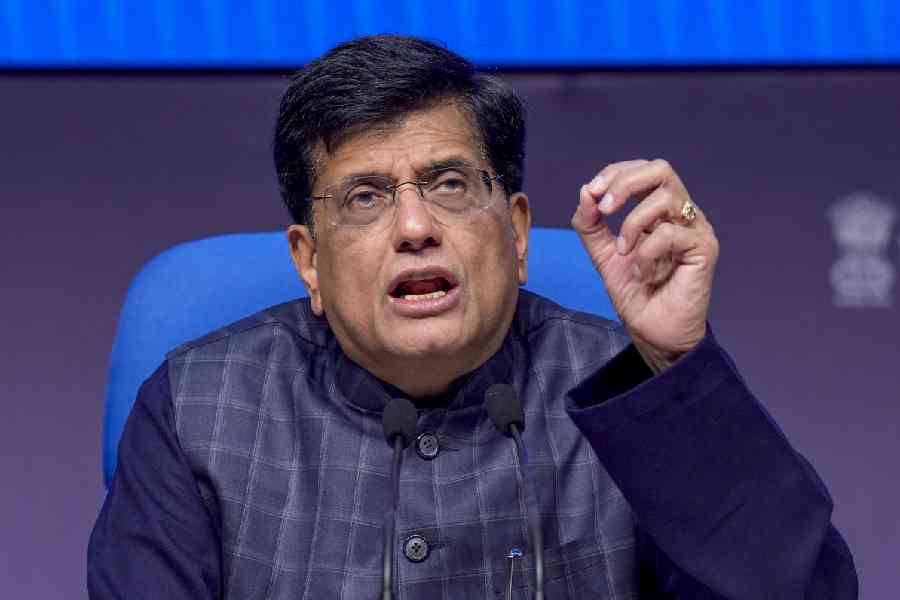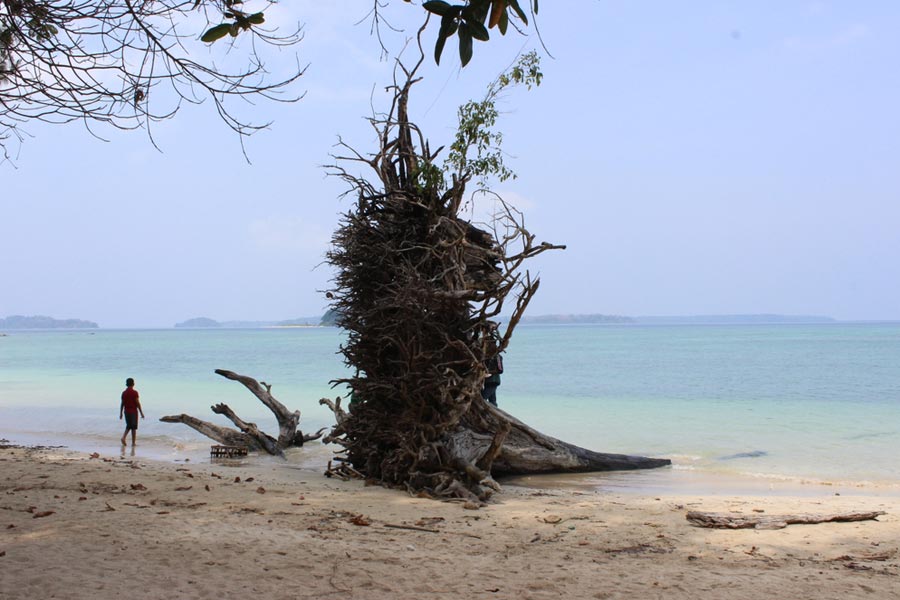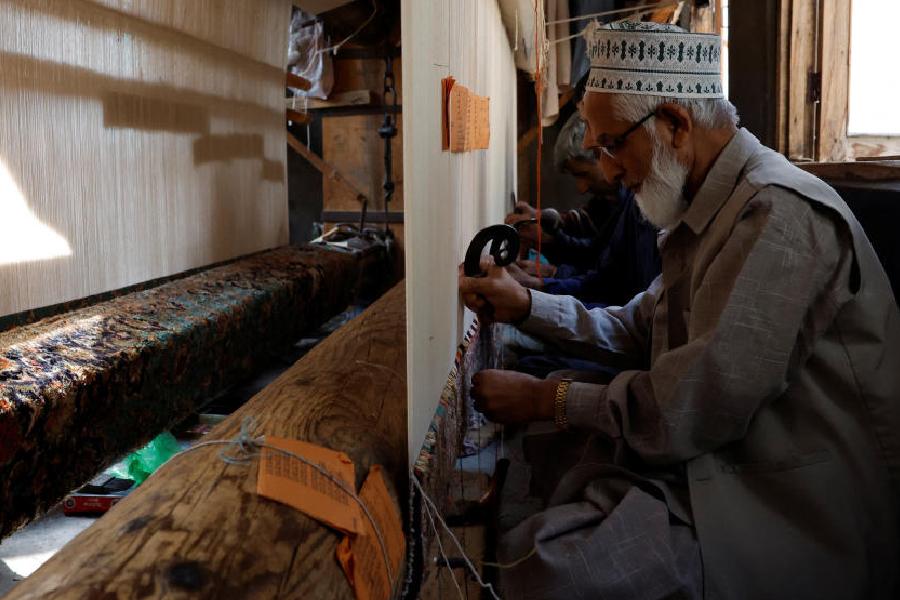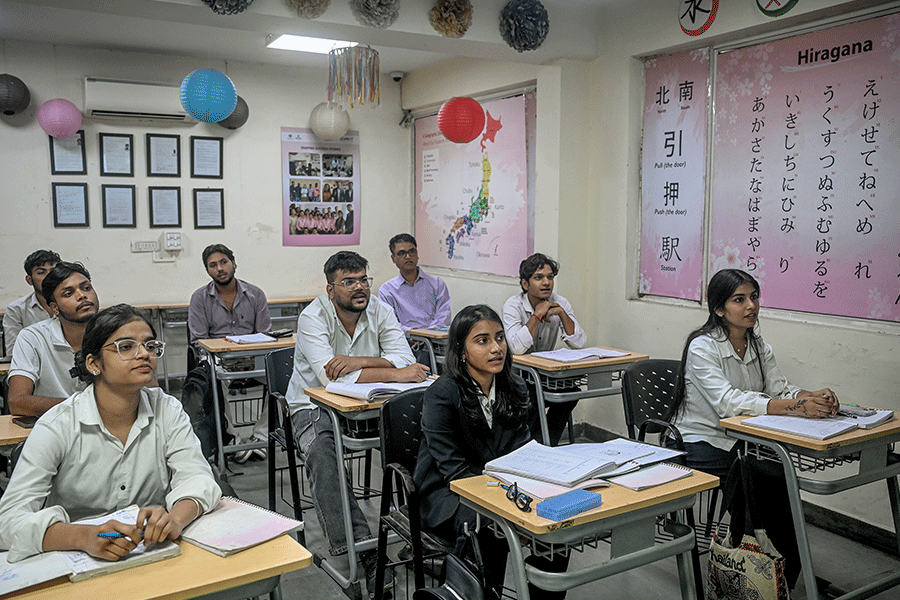 |
 |
| (Top) The Virupaksha temple in Hampi, where the expedition is headed. The statue of Afanasy Nikitin in his hometown of Tver in Russia |
New Delhi, March 21: The distance to be covered is a little more than 2,000 km, the time in hand less than 10 days.
Two sturdy sports utility vehicles stand revving in Mumbai all tuned and oiled for a gruelling journey through the craggy folds of the Western Ghats in Maharashtra and Karnataka.
Overnight pit stops have been scheduled at Solapur, Bidar, Gulbarga, Bijapur, Badami, Hampi and Panaji, before touching base back in Mumbai.
A route that was once taken by an ancient traveller is about to be retraced.
Come Saturday, and a road expedition led by former government servant and traveller Phalguni Matilal and noted historian Hari Vasudevan will begin from Mumbai on the tracks of the 15th century Russian traveller, Afanasy Nikitin, known in academic circles as among the first Europeans to set foot in the subcontinent.
Plodding along the path that Afanasy Nikitin took more than five centuries ago, the team will try and analyse the reasons for his coming to India, apart from assessing the development of Indo-Russian relations over time.
This trip is the second and final leg of the expedition. The first overseas leg that had 14 members began last November in the Russian town of Tver — where Afanasy Nikitin was born — and ended in Iran in December.
The team for the intra- national trip, however, numbers only seven, and comprises a mix of historians, travellers and documentary personnel.
According to notes left by Afanasy Nikitin, the traveller had set out from Russia and traversed eastern Europe and West Asia to reach India in 1471.
His route ran past the Caspian Sea and the Black Sea all the way to Iran, from where he took a ship to cross the Arabian Sea to land where Alibag, a posh suburb of Mumbai, now stands.
Afanasy Nikitin then spent three years in India, passing through the Vijayanagar and Bahamani kingdoms before leaving for his homeland.
“Just why Nikitin came to India is a reason modern scholars have still not been able to figure out,” says Matilal.
“The purpose of the expedition is to try and understand what prospects the businessman in Nikitin saw in this country so as to undertake the voyage in the first place.”
Of course, time has drastically altered the original route — social and political equations as well — since Afanasy Nikitin’s sojourn. And today’s SUVs are more than a trifle faster than the horses he rode, if and when he wasn’t travelling on foot.
“What thus becomes important is to interpret things in a modern context, and compare them to what Nikitin might have come across in the past,” says Matilal.











